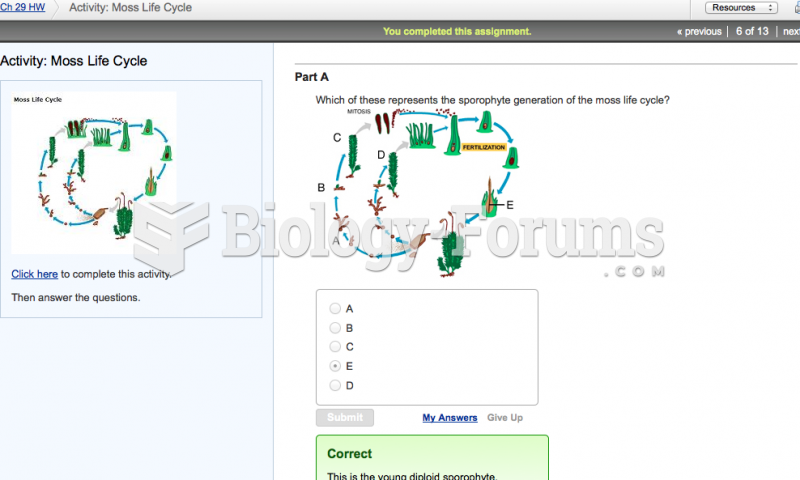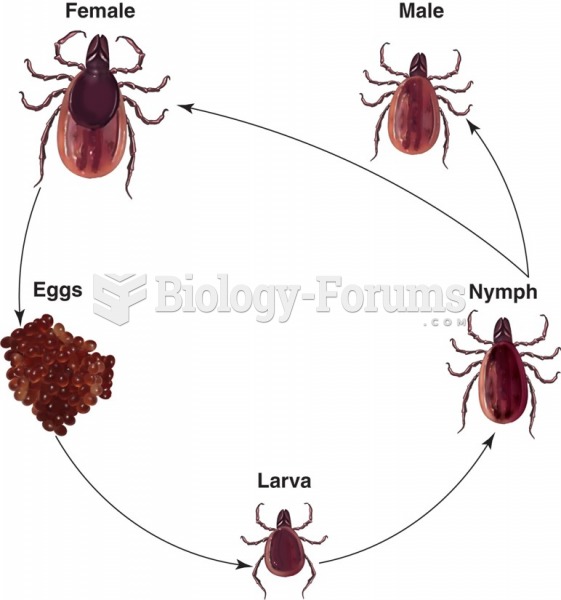|
|
|
Approximately 25% of all reported medication errors result from some kind of name confusion.
Women are 50% to 75% more likely than men to experience an adverse drug reaction.
Patients who cannot swallow may receive nutrition via a parenteral route—usually, a catheter is inserted through the chest into a large vein going into the heart.
Once thought to have neurofibromatosis, Joseph Merrick (also known as "the elephant man") is now, in retrospect, thought by clinical experts to have had Proteus syndrome. This endocrine disease causes continued and abnormal growth of the bones, muscles, skin, and so on and can become completely debilitating with severe deformities occurring anywhere on the body.
The calories found in one piece of cherry cheesecake could light a 60-watt light bulb for 1.5 hours.







